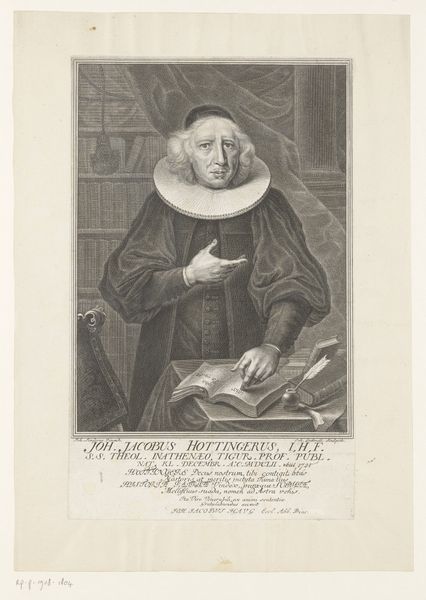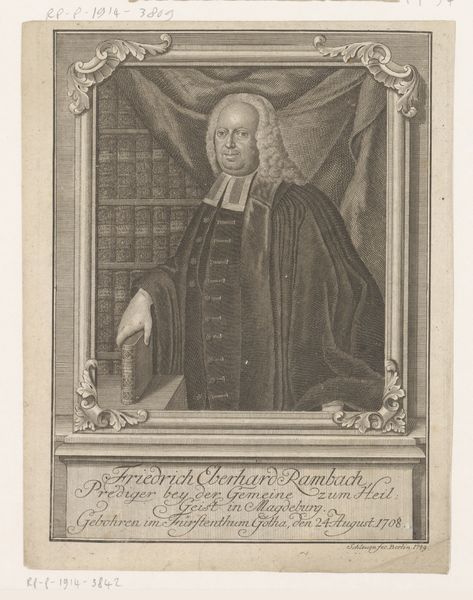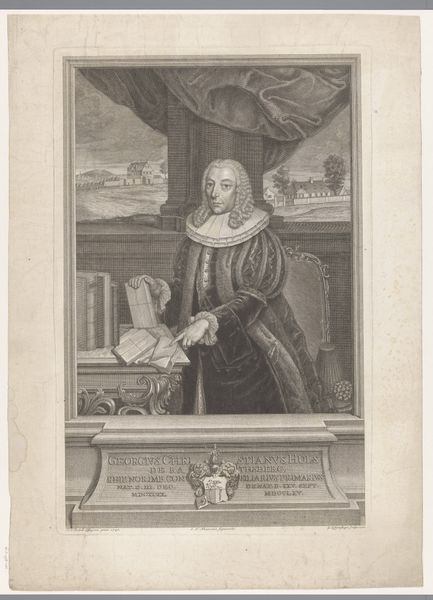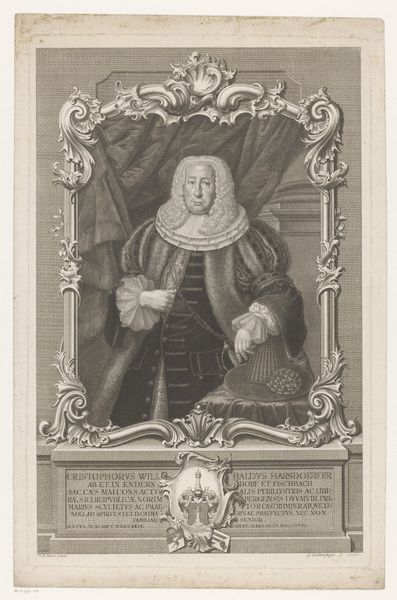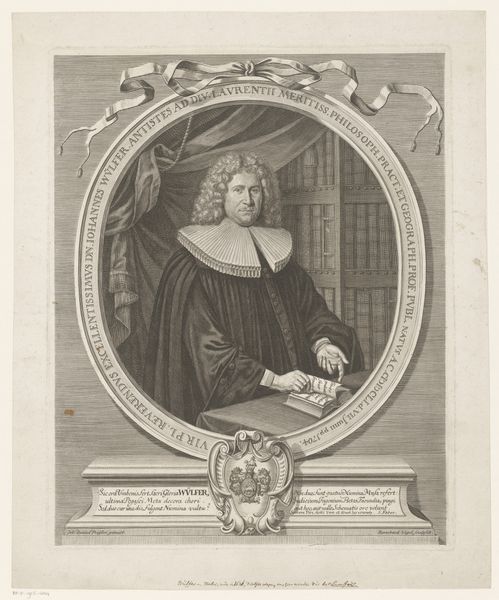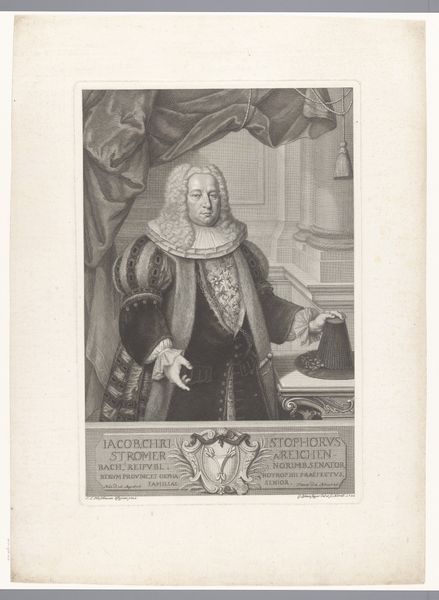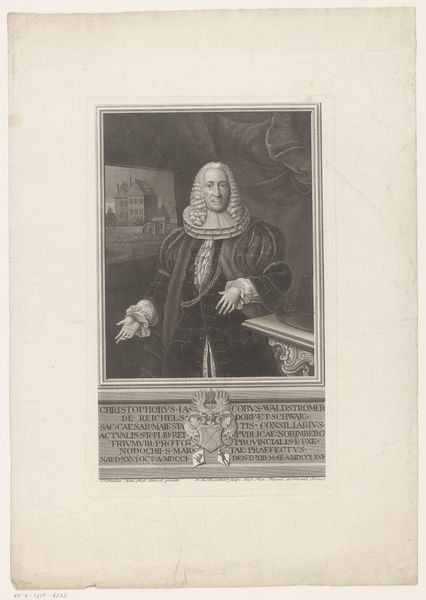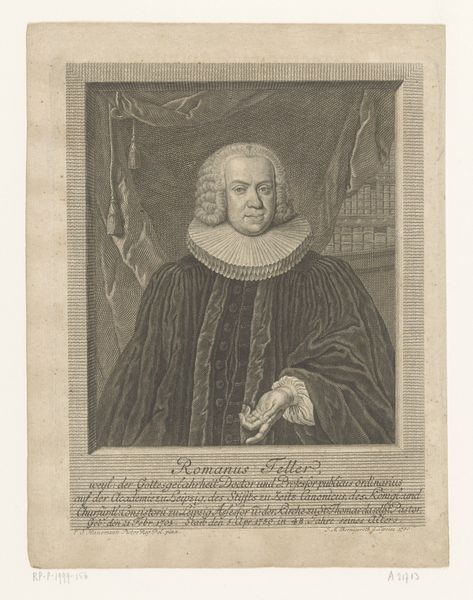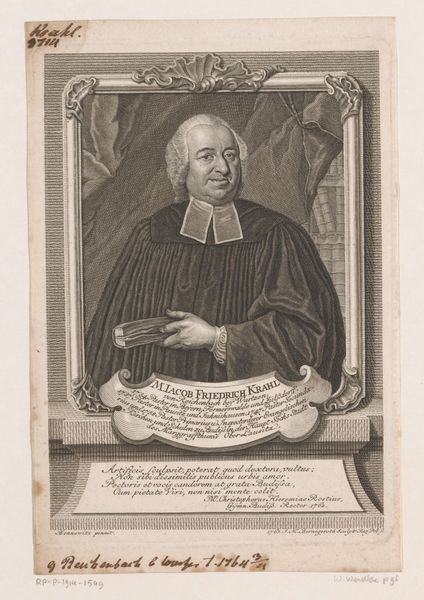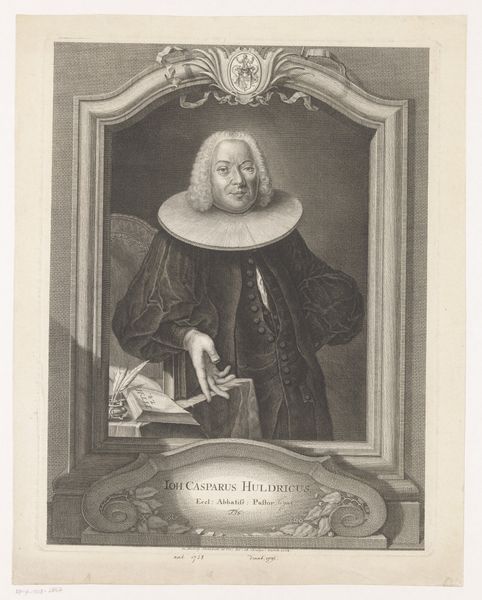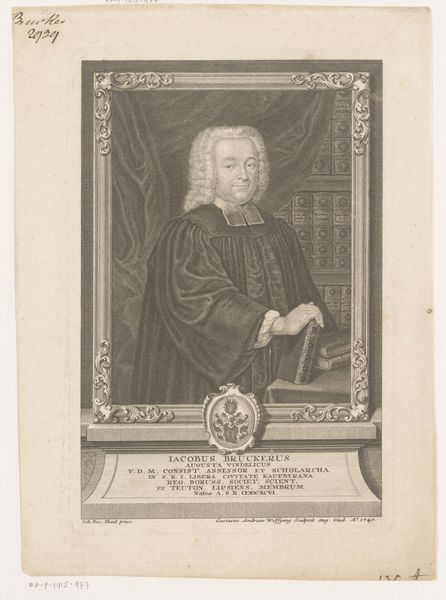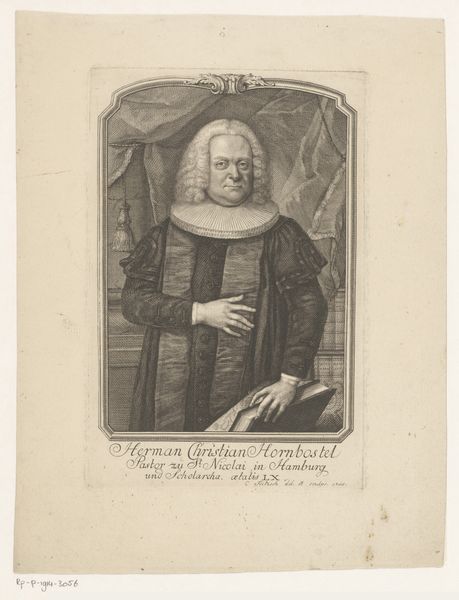
Dimensions: height 328 mm, width 219 mm
Copyright: Rijks Museum: Open Domain
This is Johann Elias Haid's "Portret van Johann Jakob Plitt," made around 1773. It's an etching, a printmaking technique where lines are incised into a metal plate with acid, then inked and pressed onto paper. The choice of etching speaks volumes. Unlike painting, printmaking was inherently reproducible, aligning with the burgeoning culture of mass media in the 18th century. It allowed images to circulate widely, democratizing representation in a way previously unimaginable. Look closely, and you'll notice the intricate details achievable through this method – the fine lines defining Plitt's face, the textures of his clothing, the ornate details of the table. Consider the labor involved. Each print demanded skilled craftsmanship, from the initial etching to the final pressing. These processes relied on skilled artisans, but also on an expanding market for images fueled by capitalism and commerce. So, while seemingly a straightforward portrait, this etching is embedded in broader social and economic shifts. Understanding the materials and processes offers a richer appreciation for the artwork's historical context, bridging the gap between "fine art" and the world of craft.
Comments
No comments
Be the first to comment and join the conversation on the ultimate creative platform.
